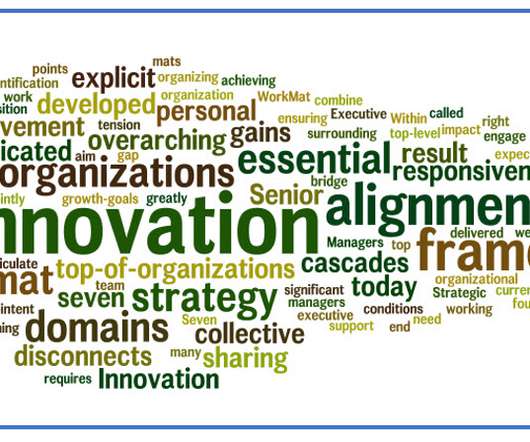Innovation cannot expand without the 4th Industrial Revolution
Paul Hobcraft
SEPTEMBER 2, 2018
To do this, technology adoption and diffusion across the ecosystem needs to improve dramatically. It is equally holding a new form of innovation back, one that is highly collaborative where partners come together to work on more complex problems. We are facing greater disruption and an increasing innovation pace.
























Let's personalize your content